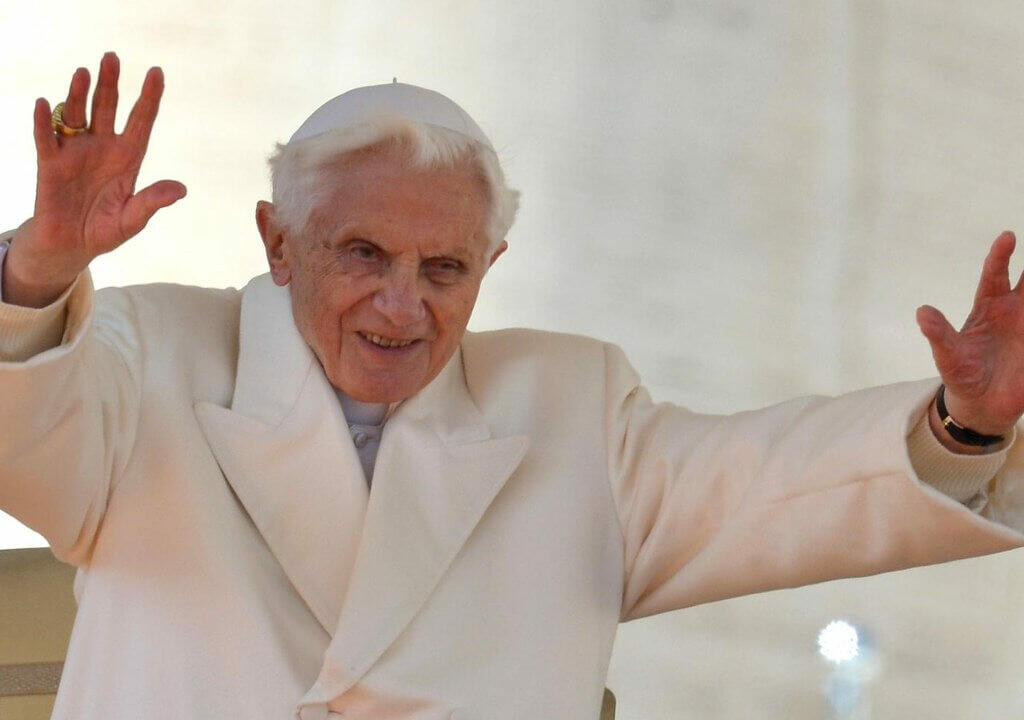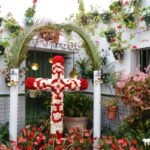The Catholic world witnessed an unprecedented event in the past six centuries: the resignation of Pope Benedict XVI. As reported at the time by Vatican spokesperson Federico Lombardi, once his resignation became official last Thursday, Joseph Ratzinger was granted the title of Pope Emeritus or Roman Pontiff Emeritus.
The Legacy of Benedict XVI as Pope Emeritus
This announcement sparked numerous questions and expectations about the future of the Catholic Church and the role Benedict XVI would play following his retirement. It was the first time in modern history that a Supreme Pontiff received the title of Pope Emeritus.
Lombardi stated that Ratzinger would be referred to as His Holiness Benedict XVI and would continue wearing a white cassock, though without the traditional mozzetta or cape, symbolizing his renunciation of the active exercise of the Petrine ministry. Additionally, he would wear brown shoes, a gift received during his visit to Mexico, instead of the red shoes symbolizing the blood of martyrs.
The decision regarding his title and attire was carefully considered to reflect his new status. By retaining the papal name and white attire, his spiritual continuity was acknowledged, while the absence of the cape and other papal symbols indicated his withdrawal from active leadership of the Church.
The Handing Over of Papal Symbols
After February 28, Benedict XVI relinquished the Fisherman’s Ring, a symbol of papal authority and apostolic succession from Saint Peter. The ring was destroyed along with the lead seal used to authenticate important documents, following the tradition that prevents misuse of these emblems after a papacy ends.
This act symbolized the conclusion of his ministry as leader of the Catholic Church and ensured the integrity of the succession process.
Protocol dictated that, during the sede vacante (vacant seat), all symbols of papal power must be rendered unusable to prevent any kind of fraud or misuse. The destruction of the Fisherman’s Ring is an ancient tradition underscoring the importance of the office and the seriousness with which the transition of power is handled within the Church.
The Final Public Audience
On February 27, Benedict XVI held his final public audience, a historic and emotional event. St. Peter’s Square welcomed more than 200,000 people, according to Vatican estimates.
Faithful from around the world expressed their desire to accompany the Pope during this pivotal moment, gathering in a crowd that reflected the deep connection many felt with him.
The event was free of charge and Cardinal Agostino Vallini, Vicar General of His Holiness for the Diocese of Rome, invited the faithful to attend and express their love and devotion to the leader of the Catholic Church. “It will be an opportunity to thank the Holy Father for his generous and humble service,” Vallini stated in an open letter.
During the audience, Benedict XVI delivered farewell remarks, reflecting on his papacy and sharing his thoughts and prayers with the Catholic community. This was a moment of great spiritual and emotional significance, both for the Pope and for the faithful.
Preparations for the Conclave
With Benedict XVI’s resignation, the Congregation General of Cardinals convened on Friday to discuss matters related to the governance of the Church during the sede vacante and to determine the start date of the conclave to elect the new Pope. While initially anticipated to begin after March 15, the conclave was expedited and scheduled around March 10 to ensure a swift transition.
Federico Lombardi announced that the first congregation of cardinals was planned for the following Monday. These meetings provided the cardinals with an opportunity to discuss the challenges facing the Church and the desired qualities in the next Pontiff. The selection of the new Pope was a process that combined tradition, spirituality and strategic consideration, drawing worldwide attention.
Changes to Conclave Rules
Prior to his resignation, Benedict XVI signed a Motu Proprio (papal decree) allowing the conclave to begin earlier if all cardinal-electors were present. This decree modified the apostolic constitution Universi Dominici Gregis, promulgated in 1996 by John Paul II, altering 15 of its 92 articles.
With these changes, the goal was to streamline the process of electing the new Pontiff and avoid prolonged gaps in Church leadership. The flexibility in the conclave’s start date enabled the cardinals to adapt to current circumstances, reflecting Benedict XVI’s understanding of the need for an expedient transition.
This modification had significant implications for the deliberation process among the cardinals, as it reduced the time available for pre-conclave consultations. However, it was trusted that the electors would approach this responsibility with the discernment and solemnity required.
A Historic Resignation and Its Implications
Benedict XVI departed the Apostolic Palace of the Vatican at 4:55 p.m. local time on February 28. He was bid farewell by the Swiss Guard, who ceased their service to him at that moment, as their role is to protect the reigning Pope. With his resignation, Benedict XVI became the fourth Pope to resign in history and the first to do so in 600 years, following Gregory XII’s abdication in 1415 during the Western Schism.
This decision elicited diverse reactions worldwide. While some faithful expressed surprise and sadness, others saw it as an act of humility and responsibility. The resignation of a Pope is an extraordinarily rare event, prompting many to reflect on the Church’s future and the challenges the next Pontiff would face.
Benedict XVI cited his advanced age and declining health as the reasons for his resignation, stating that these factors hindered his ability to meet the demands of the Petrine ministry. This act of resignation was interpreted as a call for renewal and an opportunity for the Church to adapt to modern challenges.
The Future of Benedict XVI
Following his resignation, Benedict XVI spent nearly two months at the papal residence in Castel Gandolfo, located outside Rome. He later moved to a monastery within the Vatican gardens, dedicating his time to prayer, meditation and theological study. Though he retired from public life, his influence and legacy remained significant for the Catholic Church.
It is worth noting that despite his resignation, Benedict XVI did not participate in the conclave to elect his successor, adhering to canonical norms governing such processes. His presence in the Vatican, however, raised questions about how the Pope Emeritus and the new Pontiff would coexist. Church authorities assured that his retirement would be discreet and would not interfere with the functions of the new Pope.
The concept of a Pope Emeritus is a new one for the Church and his role and status were closely observed. Some experts regarded his experience and wisdom as a valuable resource, while others warned of potential confusion regarding spiritual authority.
Expectations and Challenges for the New Conclave
As the conclave approached, speculation about who the next Pope would be abounded. The cardinal-electors faced the task of choosing a leader capable of guiding the Church in an increasingly complex and challenging world. Issues such as secularization, sexual abuse scandals, the management of the Vatican Bank and the need for structural reforms were central to their deliberations.
The Church confronted numerous challenges, such as a decline in the number of faithful in Europe and the emergence of new religious movements. Additionally, interreligious dialogue and the defense of Christian values in a secularized society were pressing concerns. To tackle these issues, the next Pontiff would require wisdom, charisma, and a forward-looking vision.
Conclusion
The resignation of Benedict XVI marked a milestone in the history of the Catholic Church. His decision opened a new chapter, full of uncertainties but also opportunities for renewal and strengthening of faith. As the world awaited the election of the new Pope, the faithful united in prayer and hope for the Church’s future.
This transition was not only a change in leadership but also an occasion to reflect on the Church’s role in the modern world and how it could continue to be a guiding light for millions. The Catholic community looked ahead with confidence, trusting that the Holy Spirit would guide the cardinals in their choice and that the new Pope would lead the Church on the path of truth and charity.
With information from Vatican News
Official news portal providing updated information on the Pope, the Holy See and the Church worldwide





